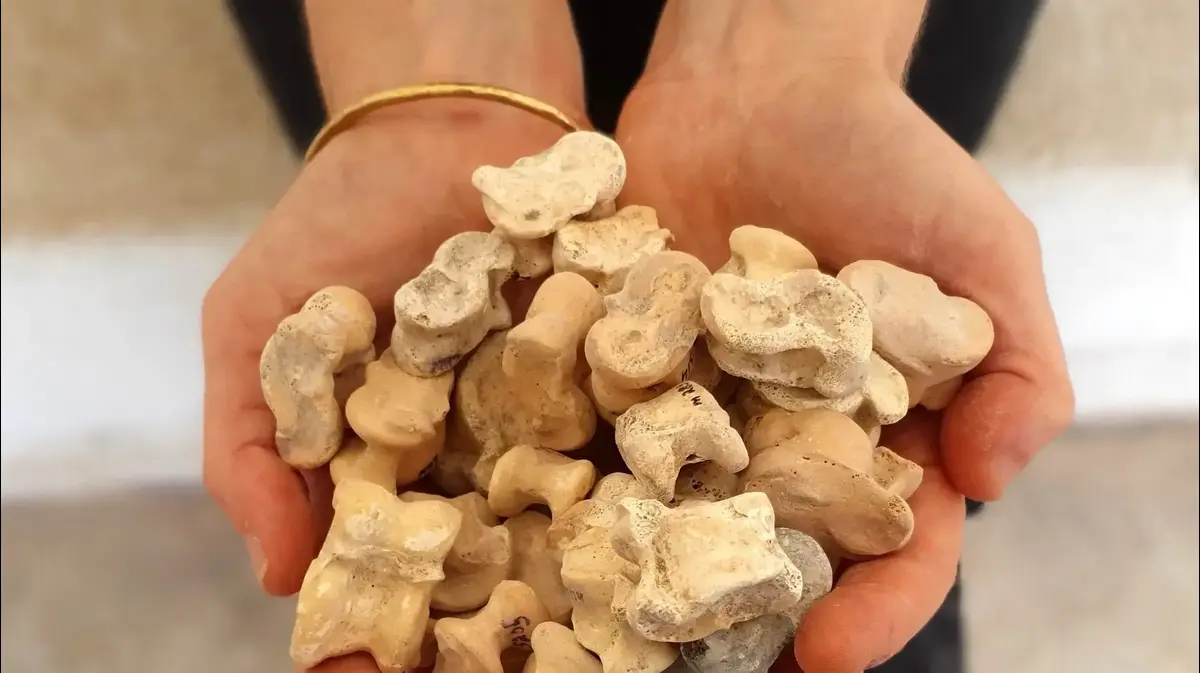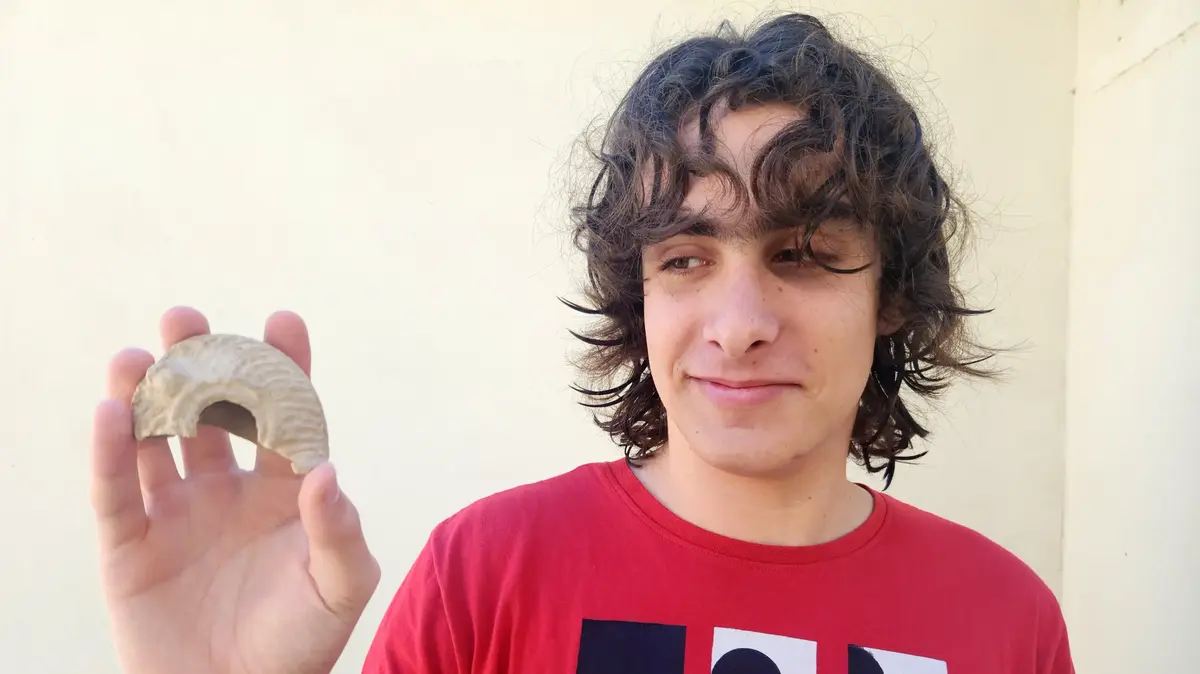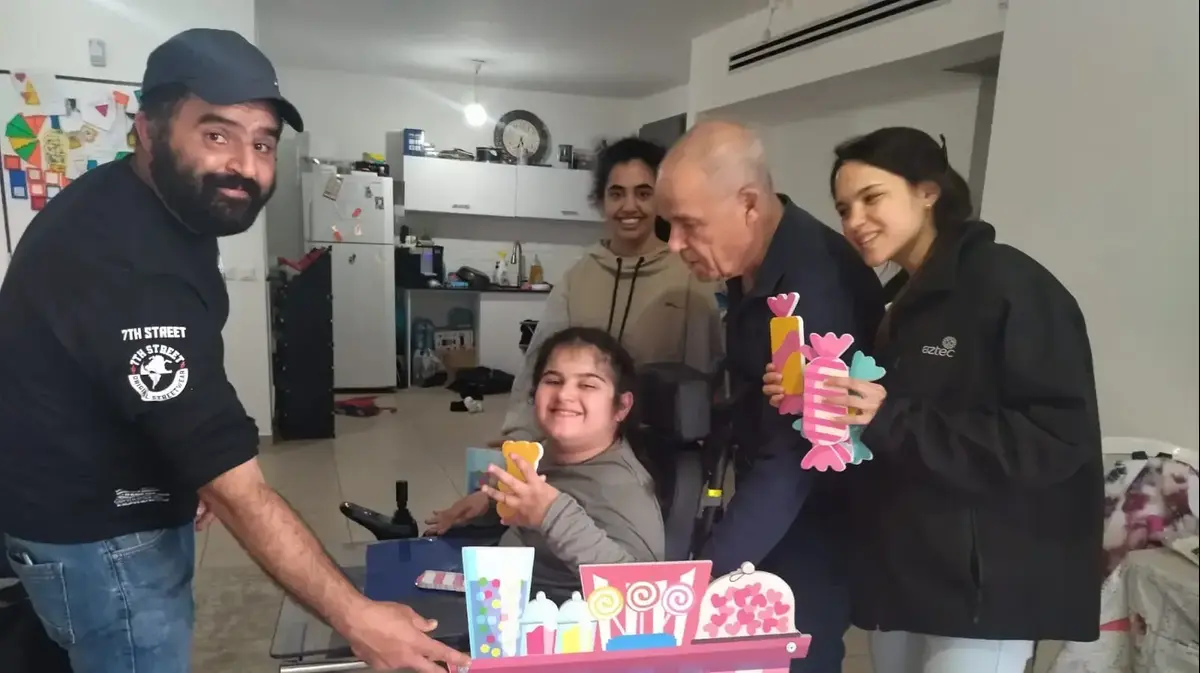A rare collection of 2300-year-old game and divination dice was discovered in Beit Govrin
The collection from the Hellenistic period, which includes 530 "magical bones", is one of the largest in the world and includes ankle bones of goats and sheep similar in shape to a cube, intended to be used as game and worship cubes by women and children.
Dozens of them were engraved with the names of gods and goddesses, including Aphrodite, Hermes and Nike
Ziv Reinstein
08/16/2022
Tuesday, August 16, 2022, 08:28 Updated: 10:03
Share on Facebook
Share on WhatsApp
Share on Twitter
Share by email
Share in general
Comments
Comments
Magical game dice from the Hellenistic period found in Beit Govrin (Photo: Yuli Schwartz, Israel Antiquities Authority)
A rare collection of
astragals
- bones for playing and divination from the Hellenistic period (2,300 years ago) was discovered by the site's excavator, Dr. Ian Stern, in the Marsha-Beit Govrin National Park in the Judean Lowlands. The origin of the collection, which was discovered in the early 2000s, in the underground spaces of Grounds found under the ancient city of Marsha.
These are 530 items - ankle bones of goats and sheep similar in shape to the cube, intended to be used as game and worship cubes by women and children. Some of the cubes were polished, perforated, and poured with lead content, and this for the purpose of throwing them in an optimal way.
Dozens of the bones bore inscriptions in Greek: some of them were engraved with the names of gods and goddesses related to the wishes of the heart of everyday life in antiquity.
Among other things, the names of the gods Aphrodite, the goddess of fertility, love and beauty, the god Eros - the god of love, the god Hermes, the goddess Hera and the goddess Nika - the goddess of victory, were engraved.
On another part of the bones in the collection were written game instructions, or roles in the game, such as: "Robber", "Stop", "Burn", and more.
Dr. Lee Perry-Gal looks at the magic game cubes found in Beit Govrin (Photo: Israel Antiquities Authority, Yuli Schwartz)
Some of them were engraved with the names of gods and goddesses.
The ancient game dice (Photo: Israel Antiquities Authority, Yuli Schwartz)
The dice bear the names of gods and game instructions (Photo: Israel Antiquities Authority, Roy Shapir, University of Haifa)
"The collection indicates that humans looked for answers in witchcraft and the occult worlds"
According to Dr. Lee Perry-Gal, an archaeozoologist at the Israel Antiquities Authority and a research fellow at the University of Haifa, "The collection of Astragali from Marsha is rare and special in terms of the quantity and quality of the engravings on the bones.
The collection indicates that just like today, in times of distress, people looked for answers in external factors, in witchcraft and in the occult worlds.
In ancient times, people - and women in particular, faced an environment of uncertainty, death in childbirth and health problems, so they tried to protect themselves with magic.
In addition, it is known that these dice were also used for a game;
It is interesting to note that examples of children's burials with game blocks of this type are known worldwide.
The cubes, which were a significant game object, were intended to pass with the children to the next world and be used by them there." Peri Gal adds that "since the astragals symbolized luck, they also used to bury them at the doorstep of the house, in the hope that they would bring a blessing."
It is interesting to know that a large part of these bones were found alongside ostracones (inscriptions engraved or written in ink on clay) in Aramaic, which carried a 'spell formula/condition';
'If you do this, something like this will happen to you.'
This strengthens the conclusion that the astragals were used in many cases in the magical divination ceremony, and not for the game.
"The cubes are meant to go with the children to the next world and be used by them there" (Photo: Israel Antiquities Authority, Yuli Schwartz)
Dozens of the Astragali found near an altar discovered at the Marsha site (Photo: Israel Antiquities Authority, Dr. Ian Stern)
"Marsha - one of the smelters of the South Levant"
According to Dr. Perry Gal, "Marsha was one of the melting pots of the southern Levant.
Different cultures lived in it, neighboring and subject to the Hellenistic rule.
Reds, Phoenicians, Nabateans and Jews lived there, and the cultures influenced each other."
According to the director of the Antiquities Authority, Eli Escozido, "the fascinating research sheds light on the ways of life in the ancient world, and reminds us all that people are people;
They dream, they hope, and despite all the day-to-day difficulties, they also engage in leisure and enjoyment."
The rare collection, which was recently published in the British scientific magazine LEVANT, has been studied in recent years by Dr. Lee Perry Gal of the Antiquities Authority, Prof. Adi Ehrlich of the Institute of Archeology S. Zinman at the University of Haifa, Dr. Avner Aker from the Department of AI Studies and Archeology at Bar Ilan University, and Dr. Ian Stern from the Nelson Glick Institute of Biblical and Antiquities at Hebrew Union College.
tourism
news
Tags
Israel Antiquities Authority
bones
Beit Guvrin








